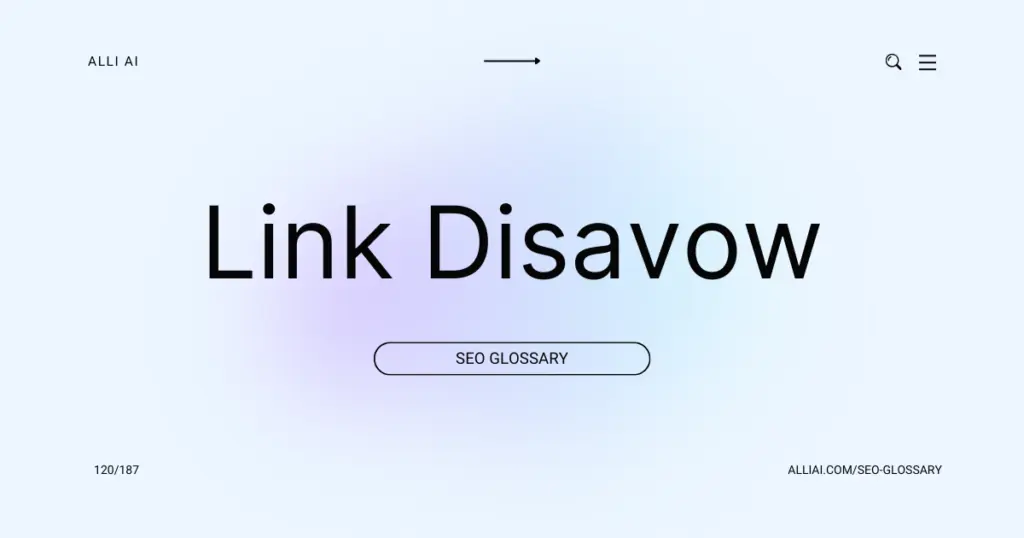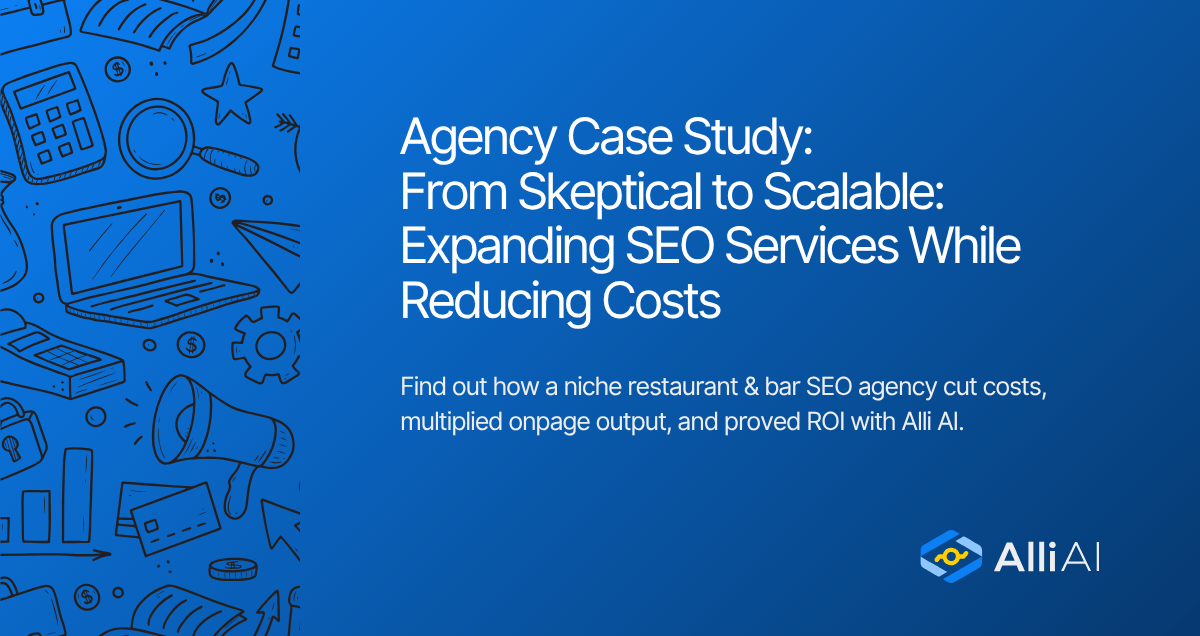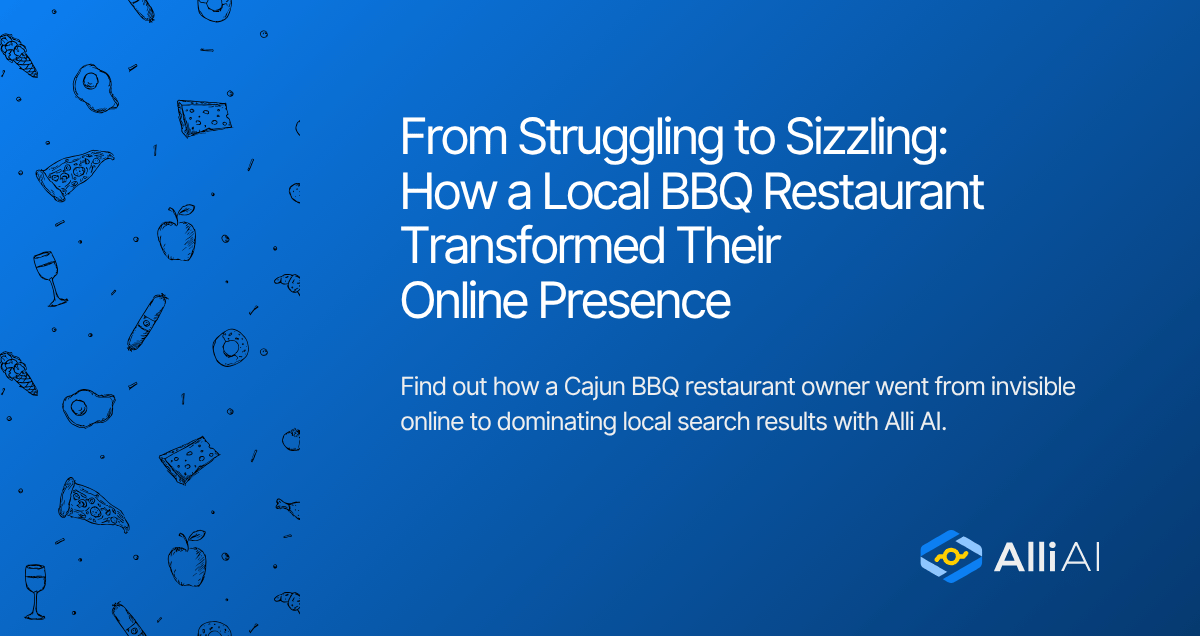What Does Link Disavow Mean?
Link Disavow is a tool provided by Google that allows website owners to tell Google to ignore certain backlinks to their site. This is useful for disregarding links that might be harmful or low-quality, which could negatively impact the website’s search engine ranking.
Where Does Link Disavow Fit Into The Broader SEO Landscape?
Link Disavow is a tool used by webmasters to signal to Google and other search engines that they should ignore specific backlinks that are harmful or low-quality. This is crucial in the SEO landscape as backlinks are a significant factor in a website’s search engine ranking, but not all links are beneficial. Some can be toxic, resulting from poor-quality or spammy sources, and can harm a site’s ranking.
Using the Link Disavow tool properly helps maintain the health of a site’s link profile by reducing the impact of undesirable links, which might be seen as attempts to manipulate search rankings. This is particularly important after receiving a penalty from Google for unnatural links or when noticing a sudden drop in traffic that could be attributed to bad links. Such actions visibly place disavow within a risk management strategy in SEO practices, ensuring that a website maintains or improves its credibility and ranking in search engine results pages (SERP).
Real Life Analogies or Metaphors to Explain Link Disavow
Imagine your online reputation is like a neighborhood where your house is located. Each link to your website is like a neighboring house. Most neighbors are great, but occasionally, there’s a rundown house or a less reputable neighbor. Link disavow is like telling the neighborhood association which houses you don’t want to be associated with. This way, when people judge your neighborhood (or website), they know you’ve disowned the problematic elements.
How the Link Disavow Functions or is Implemented?
1. Identify Unnatural Links: The website owner uses tools like Google Search Console to identify potentially harmful backlinks that could be affecting their site’s SEO negatively.
2. Attempt to Remove Links: The owner contacts the administrators of the domains linking to their site in an attempt to have the negative links removed manually.
3. Compile a Disavow File: After removing as many links as possible, the owner compiles a list of links they couldn’t remove. This list is formatted into a plain text file with one URL or domain per line. Domains are specified using “domain:” followed by the domain name.
4. Submit to Google: The disavow file is submitted to Google through the Google Search Console. This tool is specifically for disavowing links that the owner believes are harming their site’s ranking.
5. Google Processes the Request: Google processes the disavow file and eventually disassociates the negative links from affecting the site’s ranking. This process can take several weeks.
6. Monitoring and Adjusting: Post-submission, the website owner should monitor their site’s performance and adjust the disavow file as necessary, either removing or adding back links based on ongoing SEO performance and backlink profile changes.
Impact Link Disavow has on SEO
1. Reduction of Penalty Risks: Disavowing spammy or low-quality links can help a website reduce the risk of penalties from Google, particularly those linked to unnatural links. By disavowing these harmful links, SEO performance may improve as the site is no longer weighed down by the negative associations.
2. Improvement in Link Quality: If you disavow poor or irrelevant backlinks, it signals to search engines that you want to dissociate from low-quality sources. This helps in maintaining a cleaner, more authoritative backlink profile.
3. Recovery from Manual Actions: For sites that have been manually penalized by Google due to bad link practices, using the disavow tool is part of the recovery process. Disavowing the problematic links can help gradually restore the site’s rankings in search results.
4. Potential Ranking Improvements: By disavowing harmful links, you indirectly boost the efficacy of good links. When Google recalculates the site’s link profile, the remaining high-quality links can have a more pronounced positive impact on rankings.
5. Protection from Negative SEO: Disavowing links can be crucial for mitigating the effects of negative SEO attacks, where malicious parties might create bad links to harm a site’s ranking. Regular monitoring and disavowing can protect the site’s SEO performance and stability.
6. No Direct Impact on User Experience: The disavow tool does not influence direct user experience on a website, as it operates at the search engine level by communicating which links should be ignored. Changes in SE rankings might indirectly affect user experience by altering site visibility and thus traffic.
SEO Best Practices For Link Disavow
1. Conduct a link audit:
– Use SEO tools such as Google Search Console, Ahrefs, SEMrush, or Moz to gather a list of backlinks.
– Export the list to a spreadsheet.
2. Evaluate the links:
– Analyze the quality of each link.
– Identify potentially harmful links based on metrics like relevance, trustworthiness, and spam score.
3. Create a list of links to disavow:
– Mark the links that you determine to be unnatural or harmful.
4. Format your disavow file:
– Create a plain text file (.txt) encoded in UTF-8 or 7-bit ASCII.
– Start each line with “domain:” followed by the domain name to disavow entire domains or list individual URLs.
– Comment lines by starting with a “#” to provide information about your actions.
5. Upload your disavow file:
– Go to the Google Disavow Tool.
– Select your website.
– Click on “Disavow Links.”
– Click on “Choose file,” and upload your .txt file.
6. Submit the disavow file:
– Review your file to ensure accuracy.
– Click “Submit” to finalize the process.
7. Monitor the results:
– Keep an eye on your site’s performance and search rankings after submitting the disavow file.
– Reassess and update the disavow file if necessary.
Common Mistakes To Avoid
1. Disavowing Too Hastily: Avoid disavowing links before thoroughly analyzing if they are genuinely harmful. Google’s algorithm often identifies and neutralizes bad links without manual intervention.
2. Failing to Audit Links Properly: Always execute a comprehensive link audit before deciding to disavow. Misidentifying good links as bad can harm your site’s performance by losing valuable link juice.
3. Using Incorrect Format in Disavow File: Google requires a specific text file format for the disavow tool. Errors in formatting, such as wrong encoding or syntax, can lead to the file being rejected or improperly processed.
4. Disavowing Domain vs. URL: Understand when to disavow at the domain level versus the URL level. Disavowing the entire domain should be reserved for overwhelmingly spammy domains.
5. Not Updating the Disavow File: Keep the disavow file updated. Removing disavows for links that have become credible or adding new spammy links as they appear is crucial.
6. Overusing the Disavow Tool: Use the disavow tool sparingly and only when necessary. Overuse can be seen as an attempt to manipulate search results and may raise a flag to Google.
7. Ignoring Reavowal: If a disavowed link turns beneficial, you must reavow it. This process involves removing lines from your disavow file and allowing some time for Google to re-crawl and reassign value to the links.
8. Lack of Continuous Monitoring: Post-disavow, continuously monitor your link profile and site performance. Changes and fluctuations in rankings can provide insights into the effectiveness or repercussions of your disavowed links.
9. Inadequate Communication with Webmasters: Attempt to have spammy links removed by contacting webmasters before resorting to disavowing. This can sometimes provide a more effective long-term solution.
10. Not Using Disavow as a Last Resort: Consider disavow tool as a last resort after all other efforts to remove harmful links have failed. Google expects users to try manual link removals first.






